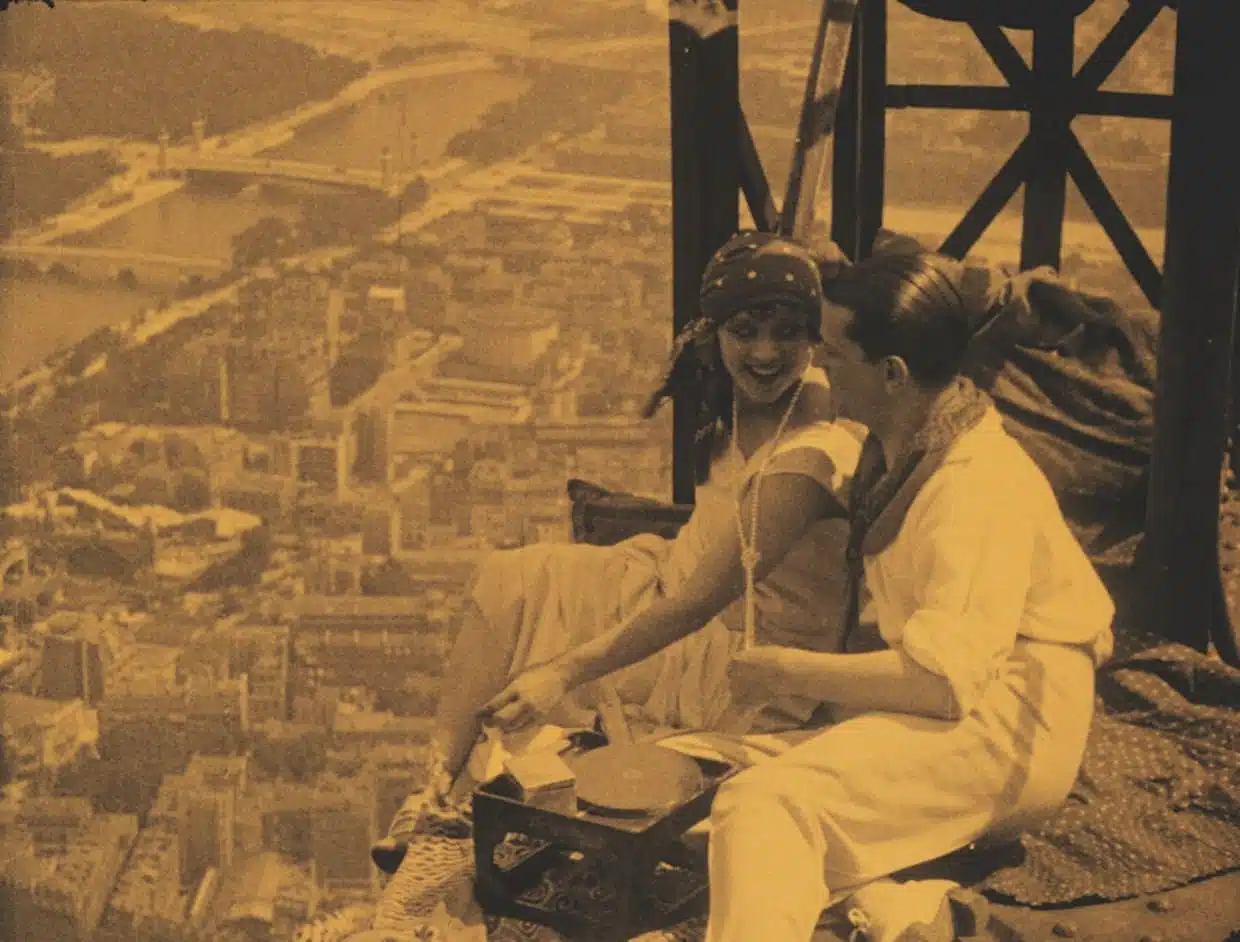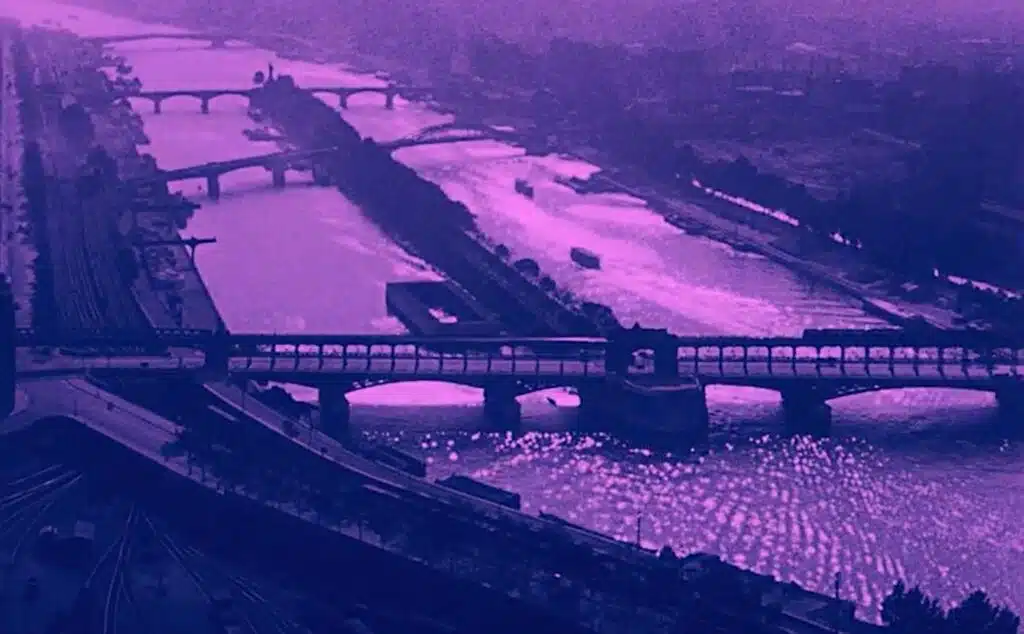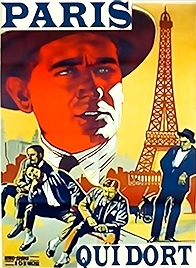Paris Qui Dort, Paris Asleep, The Crazy Ray, The Invisible Ray and even At 3:25, this odd French silent movie from 1925 goes by many names and was the first feature by René Clair, a film-maker who got into movies because that’s where the girls were, or so he said, and stayed there because that’s where the money was, more than in journalism at any rate, his original career choice.
It’s not a long film, a whisker under an hour in most of the versions you’ll find (At 3:25 tends to be a shortened version) but the one to go for is the 2018 restoration, a beautifully done work of wonder which presents the image as crisp and clear, all the better to see the many fabulous shots of an entirely empty Paris in all its dirty majesty. Coal was still king, clean air acts were a long way in the future and magnificent buildings were for the most part magnificently grubby.
It’s really very good for a first feature and it’s also a taster for what would become Clair hallmarks – a fascination with fantasy, the playful, the comedic and the naughty – and it’s unusual for the time because it’s a sci-fi movie, comedic sci-fi, in fact.
In what looks like a foreshadowing of the plot from 28 Days Later a man wakes up way up in the Eiffel Tower, where he is the nightwatchman, and discovers that all of Paris has been frozen in time. He’ll later discover that this happened at 3.25am, which is why Paris is so empty. In the streets taxi drivers are seemingly asleep at the wheel, a cop is frozen right on the point of nabbing a felon. By the River Seine a would-be suicide is at the water’s edge about to throw himself in.
The man, Albert (Henri Rollan), wanders the streets past these little crystallized moments, through the Place de la Concorde, past the Opéra, around the Arc de Triomphe, taking in Notre Dame and other sights in what is essentially a series of postcards from the French capital, plus one walking man.
Eventually he comes across a carful of people who are also not asleep. Four men and one woman. They have just arrived from Marseille by plane and so, one of them theorises, it must be something to do with being high off the ground at a certain point that has exempted these six people from the fate that’s befallen the rest of the populace of Paris.
From here it’s a series of adventures of these six people, wandering among inert Parisians, becoming rich on stolen money, discovering there’s not much you can do with money when there’s no one to buy stuff from, and eventually falling out over the one-woman-to-five-men situation.
Clair packs in a lot of incident for such a short film, and includes some scenes set up high up on the Eiffel Tower overlooking the city below (not for sufferers of vertigo), until eventually the mystery is resolved by the arrival of a mad scientist and his daughter.
Comedy, fantasy, drama, action and romance, Clair packs it in, using the streets of Paris as his backdrop and a couple of simple set-ups when a studio scene is called for – the machine that stops time, for example, is a black box with a lever and three lightbulbs on the top. And when studio set-ups aren’t quite enough he resorts to little animated diagrams, to illustrate how the mad scientist’s “crazy ray” works.
It is quite amusing, fun, fascinating and cute. Clair clearly knows what he’s about and gets good performances from his actors, who don’t overdo it at all. There’s a wacky naturalism at work here. Restraint amid the fantasy situation.
Clair’s most famous films these days tend to be his Hollywood ones, like I Married a Witch and It Happened Tomorrow. Though he preferred the films he made in France both of those are examples of Clair’s knack for playful fantasy. And it’s all here, writ small, but very nicely.
Paris Qui Dort, as one half of a double bill with Clair’s Entr’acte – Watch it/buy it at Amazon
I am an Amazon affiliate
© Steve Morrissey 2023


